
Dr. Mario is a 1990 puzzle video game developed and published by Nintendo for the Nintendo Entertainment System, Famicom, and Game Boy. It was produced by Gunpei Yokoi and designed by Takahiro Harada. The soundtrack was composed by Hirokazu Tanaka.

Tetris Attack, also known as Panel de Pon in Japan, is a puzzle video game developed by Intelligent Systems and published by Nintendo for the Super Nintendo Entertainment System. A Game Boy version was released a year later. In the game, the player must arrange matching colored blocks in vertical or horizontal rows to clear them. The blocks steadily rise towards the top of the playfield, with new blocks being added at the bottom. Several gameplay modes are present, including a time attack and multiplayer mode.
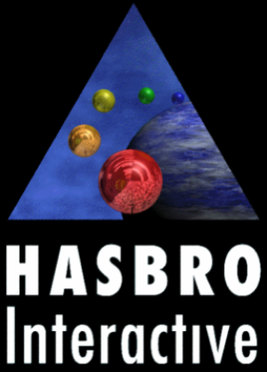
Hasbro Interactive was an American video game production and publishing subsidiary of Hasbro, the large game and toy company. Several of its studios were closed in early 2001 and most of its properties were sold to Infogrames which completed its studio's closures at the end of 2001.
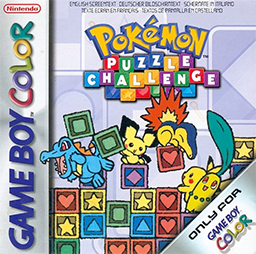
Pokémon Puzzle Challenge is a video game for the Game Boy Color. It is based on Panel de Pon, only with characters from the Pokémon franchise. The characters in Pokémon Puzzle Challenge are based on those in the Gold and Silver games, while those in Pokémon Puzzle League—its Nintendo 64 equivalent—were based more on the anime characters. However, the game is also focused around beating the Johto leaders in a puzzle challenge in Johto region. The game play mode is divided into 1 Player, 2 Player, and Training. The game was later released on the Nintendo eShop on November 6, 2014.

Wetrix is a 3D puzzle video game developed by Zed Two, the studio of brothers Ste and John Pickford, for the Nintendo 64 and personal computers in 1998, and the Dreamcast and Game Boy Color in 1999. The player's goal is to hold water bubbles falling on a 3D isometric landscape. To do this, enclosures are created with Uppers, which fall in a similar manner to Tetris blocks, that raise the ground. While water can be evaporated with fireballs, hazards such as Mines, Ice Cubes, and earthquakes also fall and ruin the player's construction.

Tetris & Dr. Mario is a 1994 puzzle video game compilation developed by Intelligent Systems and published by Nintendo for the Super Nintendo Entertainment System. It contains enhanced remakes of Tetris (1989) and Dr. Mario (1990), which were originally released for both the Nintendo Entertainment System and Game Boy in North America. Both games include split-screen multiplayer and a "Mixed Match" mode that transitions between the two games.

Pac-Attack, also known as Pac-Panic, is a 1993 falling-tile puzzle video game developed and published by Namco for the Super Nintendo Entertainment System and Sega Genesis. Versions for the Game Boy, Game Gear and Philips CD-i were also released. The player is tasked with clearing out blocks and ghosts without them stacking to the top of the playfield — blocks can be cleared by matching them in horizontal rows, while ghosts can be cleared by placing down a Pac-Man piece that can eat them. It is the first game in the Pac-Man series to be released exclusively for home platforms.

Tetris Plus is a puzzle video game developed by Natsume and published by Jaleco for arcades in 1996, and ported to the Game Boy, Sega Saturn, and PlayStation later that year. The game would be followed by a sequel, Tetris Plus 2, in 1997. Ports were to be developed for the Atari Jaguar and Nintendo 64 but these were never released.

Hercules: The Legendary Journeys is a video game developed by Player 1 and published by Titus Interactive for the Nintendo 64 in 2000 and developed and published by Titus Interactive for the Game Boy Color in 2001. The game is licensed from the 1995 television series of the same name, and the Game Boy Color title was released by Titus Interactive alongside Xena: Warrior Princess in the same month, with both games having linked features using the Game Link Cable.

Magical Tetris Challenge is a puzzle game by Capcom for the Nintendo 64, Game Boy Color, and PlayStation. It is a version of Tetris featuring Disney characters. It is one of the few Nintendo 64 games to be entirely in 2D.

Welltris is a puzzle video game, developed by Doca and licensed to Bullet-Proof Software. It is an official game in the Tetris series. Adaptations were made by Sphere, Inc., for Spectrum HoloByte, and by Infogrames. It was released for MS-DOS compatible operating systems in 1989. Ports for Macintosh, Amiga, Amstrad CPC, and Atari ST followed 1990, then ZX Spectrum and Commodore 64 1991.

Oddworld Adventures 2 is a 2000 Game Boy Color platformer game developed by Saffire and published by GT Interactive, and is a spin-off in the Oddworld series based upon the title Oddworld: Abe's Exoddus, released in 1998.

Sega Extreme Sports is a sports game developed by Norwegian video game development company Innerloop Studios. It was released under a variety of many names and published by many companies.

Xtreme Sports is a sports video game developed by WayForward Technologies for the Game Boy Color. It was initially published by Infogrames and first released in North America on June 28, 2000. The game is similar to one of WayForward's PC games, Xtreme Sports Arcade: Summer Edition (1999). The artist of Xtreme Sports would later go on to continue work with the Shantae series. A port for Nintendo Switch is in development.
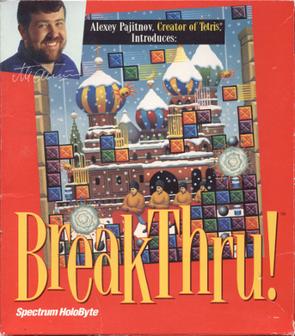
BreakThru! is a tile-matching puzzle video game released for the Windows and MS-DOS in 1994. It was created by Steve Fry for the Japanese company Zoo Corporation and published by Spectrum HoloByte, for the North American market.

Mr. Driller 2 is a puzzle video game developed and published by Namco, and the second game in the Mr. Driller series. It was released for the arcades in 2000, and was ported to the Game Boy Advance and Windows in 2001, and is available in emulated form via the Virtual Console on the Wii U. The game introduces two new characters to the series, Puchi, and Anna.

Trouballs is a 2001 Game Boy Color game developed by Paragon Five and published by Capcom Entertainment, and is a puzzle game similar in design to Tetris and Puyo Puyo.

Cool Bricks is a 1999 block breaker game developed by Pukka Games and published by SCi Games. The game is an adaptation of the arcade game Breakout for the Game Boy Color.
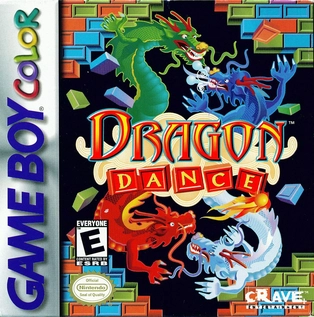
Dragon Dance is a 2000 action game for the Game Boy Color developed by Natsume and published in the United States by Crave Entertainment. The game is a paddle-and-ball game similar to the arcade video game Breakout.
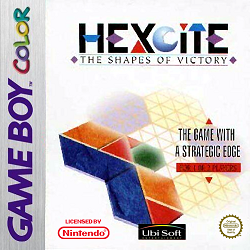
Hexcite: The Shapes of Victory is a 1998 Game Boy Color game developed by Gu Inc. in Japan and Landwarf in North America, and published by Ubisoft. The game was a launch title for the Japanese release of the Game Boy Color.





















